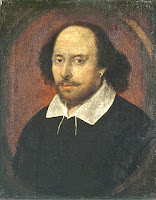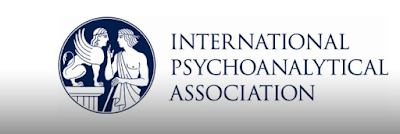The family of
Sigmund Freud, the pioneer of psychoanalysis, lived in Austria and Germany until the 1930s before emigrating to England, Canada and the United States. Several of Freud's descendants have become well known in different fields.
 |
| Freud family portrait, 1876. Standing left to right: Paula, Anna, Sigmund, Emmanuel, Rosa and Marie Freud and their cousin Simon Nathanson. Seated: Adolfine, Amalia, Alexander and Jacob Freud. The other boy and girl are unidentified. |
Freud's parents and siblings
Sigmund Freud (1856–1939) was born to Jewish Galician parents in the Moravian town of Příbor (German: Freiberg), which was then in the Austrian Empire, now in the Czech Republic. He was the eldest child of Jacob Freud (1815–1896), a wool merchant, and his third wife Amalia Nathansohn (1835–1930). Jacob Freud had two children from his first marriage to Sally Kanner (1829–1852):
- Emanuel (1833–1914)
- Philipp (1836–1911)
Jacob's second marriage (1852–1855) to Rebecca (origin uncertain) was childless. With Amalia he had eight children:
- Sigmund (birth name Sigismund Schlomo; 6 May 1856–23 September 1939)
- Julius (October 1857–15 April 1858)
- Anna (31 December 1858–11 March 1955)
- Regina Debora (nickname Rosa; born 21 March 1860, deported 23 September 1942)
- Marie (nickname Mitzi; born 22 March 1861, deported 23 September 1942)
- Esther Adolfine (nickname Dolfi; 23 July 1862–5 February 1943, deported)
- Pauline Regine (nickname Pauli; born 3 May 1864, deported 23 September 1942)
- Alexander Gotthold Ephraim (19 April 1866–23 April 1943)
 |
| Freud (aged 16) and his beloved mother, Amalia, in 1872 |
Julius Freud died in infancy. Anna married Ely Bernays (1860–1921), the elder brother of Sigmund's wife Martha. There were four daughters: Judith (b. 1885), Lucy (b. 1886), Hella (b. 1893), Martha (b. 1894) and one son, Edward (1891–1995). In 1892 the family moved to the United States where Edward Bernays became a major influence in modern public relations.
Rosa (Regina Deborah Graf-Freud) married a doctor, Heinrich Graf (1852–1908). Their son, Hermann (1897-1917) was killed in the First World War; their daughter, Cacilie (1899-1922), committed suicide after an unhappy love affair.
Mitzi (Maria Moritz-Freud) married her cousin Moritz Freud (1857–1922). There were three daughters: Margarethe (b. 1887), Lily (b. 1888), Martha (1892-1930) and one son, Theodor (b. 1904) who died in a drowning accident aged 23. Martha, who was known as Tom and dressed as a man, worked as a children’s book illustrator. After the suicide of her husband, Jakob Seidman, a journalist, she took her own life. Lily became an actress and in 1917 married the actor Arnold Marlé.
Dolfi (Esther Adolfine Freud) did not marry and remained in the family home to care for her parents.
Pauli (Pauline Regine Winternitz-Freud) married Valentine Winternitz (1859–1900) and emigrated to the United States where their daughter Rose Beatrice was born in 1896. After the death of her husband she and her daughter returned to Europe.
Alexander Freud married Sophie Sabine Schreiber (b. 1878). Their son, Harry, born in 1909, emigrated to the United States and died in 1968.
Both Freud’s half-brothers emigrated to Manchester, England, shortly before the rest of the Freud family moved from Leipzig to Vienna in 1860.
Emanuel and Marie Freud (1836–1923) married in Freiberg where their first two children were born: John (b. 1856, disappeared pre-1919), the "inseparable playmate" of Freud’s early childhood; and Pauline (1855–1944). Two children were born in Manchester: Bertha (1866–1940) and Samuel (1870–1945). Freud kept in touch with his British relatives through a regular correspondence with Samuel. They would eventually meet for the first time in London in 1938.
Philipp Freud married Bloomah Frankel (b. 1845 Birmingham, d.1925 Manchester). There were two children: Pauline (1873–1951) who married Fred Hartwig (1881–1958); and Morris (b. 1875 Manchester, d.1938 Port Elizabeth, South Africa).
Persecution and emigration
 |
| Sigmund Freud, 1926. |
The systematic persecution of Jews by Nazi Germany and the ensuing Holocaust had a profound effect on the family. Four of Freud's five sisters died in concentration camps: Rosa in Auschwitz, Mitzi in Theresienstadt, Dolfi and Paula in Treblinka. Freud's brother, Alexander, escaped with his family to Switzerland shortly before the Anschluss and they subsequently emigrated to Canada. Freud's sons Oliver, a civil engineer, and Ernst Ludwig, an architect, lived and worked in Berlin until Hitler came to power in Germany in 1933 after which they fled with their families to France and London respectively. Oliver Freud and his wife later emigrated to the United States. Their daughter, Eva, remained in France with her fiance where she died of influenza in 1944.
Freud and his remaining family left Nazi-occupied Vienna in 1938 after Ernest Jones, the then President of the International Psychoanalytic Association, secured immigration permits for them to move to Britain. Permits were also secured for Freud’s housekeeper and maid, his doctor, Max Schur and his family, as well as a number of Freud's colleagues and their families. Freud's grandson, Ernst Halberstadt, was the first to leave Vienna, initially for Paris, before going on to London where after the war he would adopt the name Ernest Freud and train as a psychoanalyst. Next to leave for Paris were Ernestine, Sophie and Walter Freud, the wife and children of Freud's eldest son, Martin. Walter joined his father in London. His mother and sister remained in France and subsequently emigrated to the United States. His maternal grandmother, Ida Drucker, was deported from Biarritz in 1942 and died in Auschwitz. Freud’s sister-in-law, Minna Bernays, was the first to leave for London early in May 1938. She was followed by his son, Martin, on 14 May and then his daughter Mathilde and her husband, Robert Hollitscher, on 24 May. Freud, his wife and daughter, Anna, left Vienna on 4 June, accompanied by their household staff and a doctor. Their arrival at Victoria Station, London on 6 June attracted widespread press coverage. Freud’s Vienna consulting room was replicated in faithful detail in the new family home, 20 Maresfield Gardens in Hampstead, North London.
Martin and Walter Freud were both interned in 1940 as enemy aliens. Following a change in government policy on internment, both were subsequently recruited to the Pioneer Corps. After the war, denied recognition as a (Vienna trained) lawyer by the British legal profession, Martin Freud ran a tobacconist’s in Bloomsbury. Walter was deported to an internment camp in New South Wales, Australia. On his return to England in 1941 he was recruited to the Pioneer Corps and subsequently to the SOE. In April 1945 he was parachuted behind enemy lines in Austria. Advised to change his name in case of capture, he refused, declaring : “I want the Germans to know a Freud is coming back”. He narrowly survived separation from his comrades and took the leading role in securing the surrender of the strategically important Zeltweg aerodrome in southern Austria. When the war ended he was assigned to war crimes investigation work in Germany. The fate of his great aunts and maternal grandmother at the hands of the Nazis meant he was particularly pleased to help secure the prosecution of directors of the firm that supplied Zyklon B gas to the concentration camps, two of whom were executed for war crimes. In 1946 he left the army with the rank of major. The following year he was he was granted British citizenship and resumed his career as an industrial chemist. Retribution for the murder of his great aunts was also a concern for Alexander Freud’s son Harry. He arrived in post-war Vienna as a US army officer to investigate the circumstances of their deportation and helped track down and bring before the courts Anton Sauerwald, the Nazi appointed official charged with the supervision of the Freuds’ assets. Sauerwald gained early release from prison in 1947 when Anna Freud intervened on his behalf, revealing that he had "used his office as our appointed commissar in such a manner as to protect my father".
Freud's children and descendants
Sigmund Freud married Martha Bernays (1861–1951) in 1886. Martha was the daughter of Berman Bernays (1826–1879) and Emmeline Philipp (1830–1910). Her grandfather, Isaac Bernays (1792–1849), was a Chief Rabbi of Hamburg. Her sister, Minna Bernays (1865-1941), became a permanent member of the Freud household after the death of her fiancé in 1895.
 |
| Sigmund Freud’s family in 1898. Front row: Sophie, Anna and Ernst Freud. Middle row: Oliver and Martha Freud, Minna Bernays. Back row: Martin and Sigmund Freud. |
Sigmund and Martha Freud had six children and eight grandchildren:
- Mathilde Freud (1887–1978) married Robert Hollitscher (1875–1959), and had no children
- Jean-Martin Freud (1889–1967, known as Martin Freud) married Esti Drucker (1896–1980), and had 2 children:
- Anton Walter Freud (1921–2004) married Annette Krarup (1925–2000); 3 children
- David Freud (born 1950, later Lord Freud), married and had 3 children:
- Andrew Freud
- Emily Freud
- Juliet Freud
- Ida Freud (born 1952), married N. Fairbairn
- Caroline Freud (born 1955), married N. Penney
- Sophie Freud (born 1924) married Paul Loewenstein (born 1921), and had 3 children:
- Andrea Freud Loewenstein
- Dania Loewenstein, married S. Jekel
- George Loewenstein
- Oliver Freud (1891–1969) married Henny Fuchs (1892–1971), and had 1 child:
- Eva Freud (1924–1944)
- Ernst Ludwig Freud (1892–1970) married Lucie Brasch (1896–1989), and had 3 children:
- Stephan Freud (1921-2014, known as Stephen Freud) married (i) Lois Blake (born 1924); (ii) Christine Ann Potter (born 1927). From his marriage to Lois Blake he had 1 child:
- Dorothy Freud
- Lucian Freud (1922–2011) married (i) Kathleen Garman (1926–2011), 2 children; (ii) Lady Caroline Blackwood (1931–1996). He also had 4 children by Suzy Boyt, 4 by Katherine McAdam (died 1998), 2 by Bernardine Coverley (died 2011), 1 by Jacquetta Eliot, Countess of St Germans and 1 by Celia Paul. His children include:
- Annie Freud (born 1948)
- Annabel Freud (born 1952)
- Alexander Boyt (born 1957)
- Jane McAdam Freud (born 1958)
- Paul McAdam Freud (born 1959)
- Rose Boyt
- Lucy McAdam Freud (born 1961) married Peter Everett; 2 children
- Bella Freud (born 1961) married James Fox; 1 child
- Isobel Boyt (born 1961)
- Esther Freud (born 1963) married David Morrissey; 3 children
- David McAdam Freud (born 1964), 4 children. Partner of Debbi Mason
- Susie Boyt (born 1969) married to Tom Astor; 2 children
- Francis Michael Eliot (born 1971)
- Frank Paul (born 1984)
- Clement Freud (1924–2009, later Sir Clement Freud) married June Flewett (stage name Jill Raymond)[24] in 1950 and had 5 children:
- Nicola Freud, married to Richard Allen, had 5 children:
- Tom Freud (born 1973)
- Jack Freud, married to Kate Melhuish
- Martha Freud
- Max Freud (born 1986)
- Harry Freud (born 1986)
- Dominic Freud (born 1956) married to Patty Freud, and had 3 children (Nicholas, 21, Joshua, 19, and Sophie, 17)
- Emma Freud (born 1962) partner of Richard Curtis, and had 4 children
- Matthew Freud (born 1963) married: (i) Caroline Hutton, and had 2 children; (ii) Elisabeth Murdoch, and had 2 children
- Ashley Freud (adopted nephew)
- Sophie Freud (1893–1920) married Max Halberstadt (1882–1940), and had 2 sons:
- Ernst Halberstadt (1914–2008, also known as Ernest Freud) married Irene Chambers (born 1920), and had 1 child:
- Colin Peter Freud (1956–1987)
- Heinz Halberstadt (1918–1923, also known as Heinele)
- Anna Freud (1895–1982)
 |
| Sigmund and his daughter Anna Freud (1913) |
Bibliography
- Clark, Ronald W. (1980). Freud: the Man and His Cause. London: Jonathan Cape.
- Cohen, David (2009). The Escape of Sigmund Freud. London: JR Books.
- Fry, Helen (2009). Freuds' War. Stroud: The History Press.
- Jones, Ernest (1953). Sigmund Freud: Life and Work (VOL 1: THE YOUNG FREUD 1856–1900). London: Hogarth Press.
- Young-Bruehl, Elizabeth (2008). Anna Freud. Yale University Press.
•






































